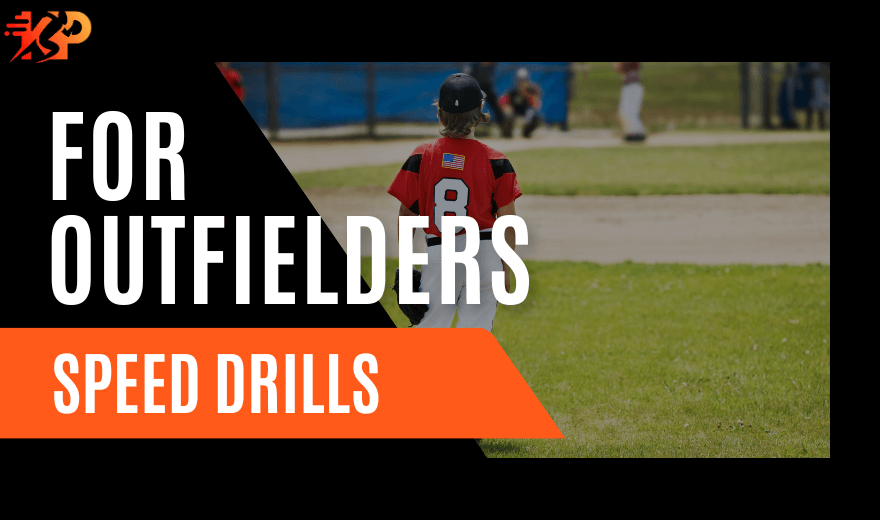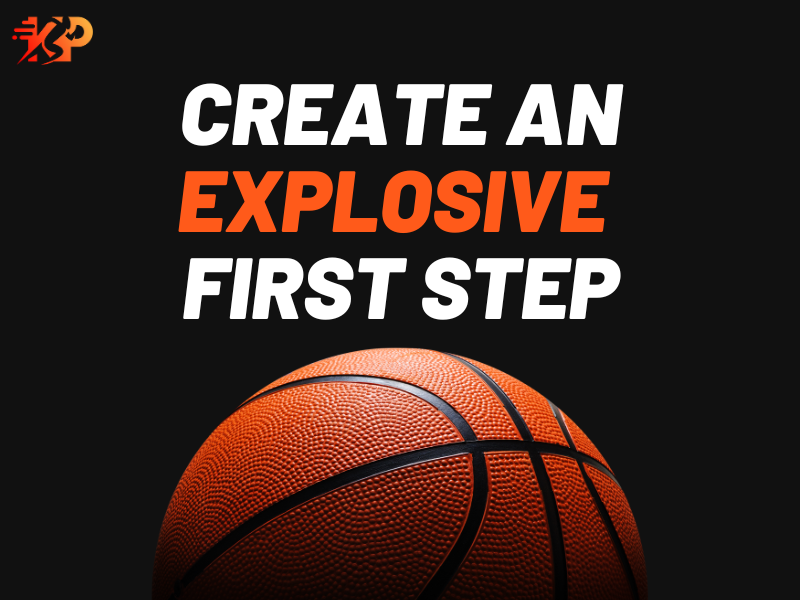Speed Drills for Outfielders: Covering More Ground with Precision

By Mark Keil, CSCS
Posted on August 20, 2024

By Mark Keil, CSCS
Posted on August 20, 2024

Outfielders cover large areas of the field, make split-second decisions, and react quickly to fly balls. The ability to cover ground with precision is critical. Outfielders must possess a combination of speed, agility, and awareness to excel in these situations.
This article explores essential speed drills to help outfielders improve their range, reaction time, and defensive performance.
(Quick note: If you’re interested in Speed Drills, then I recommend you check out Plyometric Drills for Baseball Athletes. I have a video on that page explaining each drill as I train a Former D1 Baseball Athlete.)
The Importance of Speed and Precision in the Outfield
Speed is the cornerstone of effective outfield play.
Whether tracking down a deep fly ball or charging in to make a catch on a shallow hit, outfielders must reach the ball quickly while maintaining control. However, speed alone is not enough; precision in movement is equally crucial.
Outfielders must take efficient routes to the ball, anticipate its trajectory, and position themselves for accurate throws. A fast but uncoordinated outfielder may miss plays by taking poor angles or failing to react appropriately.
The athlete should integrate specific drills targeting both speed and fielding techniques.
Let’s dive into some effective drills outfielders can incorporate into their training regimen.
1. Drop Step Drill
Objective: Improve reaction time and first-step quickness, which are crucial for tracking down fly balls hit over the head.
Execution:
- Start in an athletic stance, facing forward.
- On a coach’s signal, quickly take a drop step with one foot, opening your hips and sprinting toward an imaginary fly ball.
- Alternate between left and right directions, focusing on a quick, explosive first step.
Benefits: The drop step drill helps outfielders react faster to balls hit over their heads. By improving the initial step and hip rotation, players can cover more ground quickly, preventing extra-base hits.
2. Cone Drill (T-Drill)
Objective: Enhance agility, footwork, and the ability to change directions rapidly, simulating the movements needed to field baseballs in different areas of the outfield.
Execution:
- Set up cones in a “T” shape.
- Start at the base of the “T” and sprint to the top cone.
- From there, shuffle laterally to each side cone, then backpedal to the starting point.
- Focus on maintaining speed and control throughout the drill.
Benefits: The T-Drill develops the agility required to move laterally and backward rapidly. It mimics the quick directional changes necessary when reacting to line drives, ground balls, and fly balls that require sharp angles and efficient footwork.
3. Crossover Step Drill
Objective: Improve lateral speed and efficiency when moving sideways to catch balls hit to the gaps.
Execution:
- Stand in a ready position.
- On the coach’s signal, execute a crossover step by moving one foot across your body to initiate lateral movement.
- Continue in that direction, simulating the path toward a fly ball.
- Repeat the drill in both directions.
Benefits: The crossover step is essential for covering the large areas between outfielders. This drill ensures that players can move laterally with maximum efficiency, reducing the time it takes to reach balls hit into the gaps.
4. Sprinting Intervals
Objective: Build overall speed and endurance, focusing on quick bursts followed by recovery, which mirrors the demands of in-game play.
Execution:
- Set up a series of sprints of varying distances, such as 30, 60, and 90 feet.
- Sprint at maximum effort, then walk or jog back to the starting point to recover.
- Repeat the sprints in intervals, varying the distances to simulate different in-game scenarios.
Benefits: This drill enhances overall sprinting speed and helps outfielders maintain high-performance levels throughout a game. The varying distances simulate the different types of runs outfielders make, from short sprints to reach a blooper to longer runs for deep fly balls.
5. Reaction Ball Drill
Objective: Improve hand-eye coordination, reaction time, and the ability to react to unpredictable bounces, which is crucial for fielding ground balls or reacting to line drives.
Execution:
- Use a reaction ball (a reaction ball has an uneven surface that causes it to bounce unpredictably).
- Stand in an athletic position, and have a partner or coach throw the reaction ball toward you.
- Focus on reacting quickly to the ball’s movement and catching it cleanly.
Benefits: The reaction ball drill sharpens reflexes and prepares outfielders for unexpected bounces and trajectory changes in a game. This training helps players stay focused and react quickly, reducing the likelihood of errors.
Integrating Speed Drills into a Training Regimen
To maximize the effectiveness of these drills, outfielders should incorporate them into a well-rounded training regimen.
Always start with a dynamic warm-up to prepare the muscles and joints for physical activity. A proper warm-up can reduce the risk of injury and ensure the athlete performs at their best.
Make speed drills a regular part of your training routine. Consistent practice is critical to developing the muscle memory and physical conditioning needed to perform these skills instinctively during games.
Incorporate a variety of drills to target different aspects of speed and agility. Mixing up your drills will prevent monotony and ensure that you’re improving all facets of your outfield performance.
Whenever possible, simulate game-like scenarios in your drills. For example, have a coach or teammate hit baseballs for you to field during the drop step or cone drills to transfer the skills developed in practice to actual game situations.
After completing drills, cool down with light stretching to promote recovery. Adequate rest between sessions is essential to prevent overtraining and reduce the risk of injury.
The Impact of Speed Drills on Game Performance
The benefits of these speed drills go beyond physical conditioning—they also build confidence. An outfielder who knows they have the speed and agility to cover ground effectively will approach each play with greater assurance. This confidence can lead to more aggressive and decisive actions on the field, whether it’s making a diving catch, throwing out a runner, or positioning correctly to cut off a ball in the gap.
Moreover, these drills contribute to overall team defense. When outfielders can cover more ground and make precise plays, the pressure on the infielders and pitchers eases, leading to fewer runs allowed and more wins.
Conclusion
Speed and precision are the hallmarks of an elite outfielder.
Outfielders can enhance their ability to cover ground, react quickly, and make accurate throws by incorporating targeted speed drills into their training regimen. These drills improve physical performance and build the confidence needed to excel under pressure. Focusing on speed and agility training is essential for outfielders looking to advance to the next level.
If you live in Tulsa, Oklahoma and are looking for one of the Top Speed and Agility Training Programs near you, come check out the program for free. I train athletes weekly at World Baseball Outreach and we have several class times available.
Have questions about Speed Training? Let me know!
Training Resources



